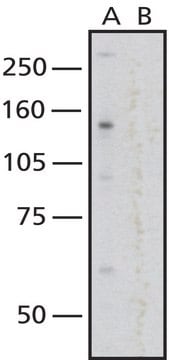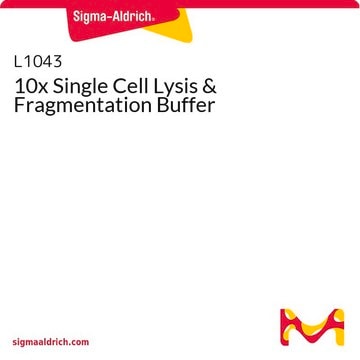NUC201
Nuclei Isolation Kit: Nuclei PURE Prep
sufficient for 15 nuclei preparations (~1-10×107 cells or 1g of tissue per preparation)
Sinónimos:
Sucrose centrifugation nuclei isolation
About This Item
Productos recomendados
usage
sufficient for 15 nuclei preparations (~1-10×107 cells or 1g of tissue per preparation)
packaging
pkg of 1 kit
storage condition
dry at room temperature
application(s)
cell analysis
foreign activity
nuclease and protease, free
shipped in
wet ice
storage temp.
2-8°C
Categorías relacionadas
Application
Biochem/physiol Actions
Solo componentes del kit
- Nuclei PURE Lysis Buffer 180 mL
related product
signalword
Danger
hcodes
Hazard Classifications
Aquatic Acute 1 - Aquatic Chronic 2 - Eye Dam. 1 - Skin Irrit. 2
Storage Class
10 - Combustible liquids
flash_point_f
Not applicable
flash_point_c
Not applicable
Certificados de análisis (COA)
Busque Certificados de análisis (COA) introduciendo el número de lote del producto. Los números de lote se encuentran en la etiqueta del producto después de las palabras «Lot» o «Batch»
¿Ya tiene este producto?
Encuentre la documentación para los productos que ha comprado recientemente en la Biblioteca de documentos.
Los clientes también vieron
Artículos
Centrifugation separates organelles based on size, shape, and density, facilitating subcellular fractionation across various samples.
Nuestro equipo de científicos tiene experiencia en todas las áreas de investigación: Ciencias de la vida, Ciencia de los materiales, Síntesis química, Cromatografía, Analítica y muchas otras.
Póngase en contacto con el Servicio técnico















